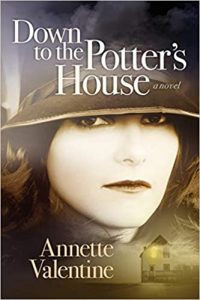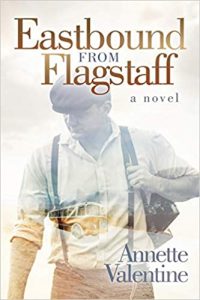Three Tips On Writing Your Story by Annette Valentine
 1. Enlighten The Path Ahead of You
1. Enlighten The Path Ahead of You
Seat yourself in darkness and you’ll not be able to do much of anything, let alone begin writing your story. To enlighten the path toward writing your story (personal or otherwise), ask yourself what flows naturally when you sit down to write. Beginning your story in your own most natural direction will release creativity and enlighten the way for the rest of the story.
I suggest starting with what comes naturally and easily because in making progress you build momentum. Accomplishment encourages confidence.
Visualizing scenes is an aspect of writing that comes easily to me.
My mother used to advise me to begin with the hardest part of a project. That good advice might be true for tasks, but writing is different. Creative writing, especially fiction. is more expression than ritual. Any form of creativity is an extension of myself. Beginning by envisioning scenes will always enlighten the path ahead.
I was a professional interior designer for 34 years. Envisioning the results before I began a project was automatic. Of course, details came into focus as a project progressed, but it was the foundational aspects that paved the way for success. Once they took root, I layered-in details where they belonged.
For me, writing and design are much like the view from an airplane: details come into focus the closer I get to the landing. Blurred scenery becomes defined, and form and color come into focus. Knowing that the details will be clarified as I continue the process is like having a beacon to enlighten the path ahead.
I’m particularly fond of this quote by E.L. Doctorow: “You can only see as far as your headlights, but you can see the whole trip that way.”
2. Energize The Soul Behind The Scenes
To find the interesting, defining, authenticating muscles of reality associated with your story will infuse it with power. Those muscles will energize the soul behind the scenes, packing it with the structure of tangible information and the strength of relatable images.
Along with the process of uncovering the tiniest facts for enhancing your readers’ imagination comes countless hours to track down the truth. It’s called research. It’s an adventure all by itself.
Whether I use the internet, the library, or schedule an interview with an authority on the subject, I’m never left feeling I’ve wasted a moment. It’s fascinating to lap up material for immediate use or tuck away tidbits in categories for later on. I am often surprised by how even the smallest fact can surface and energize the story with a spark of absurdity or slip from behind the scenes and magically show its color or personality.
Research is a proven framework for anchoring dialog and scenes. It’s like a skeleton on which to hang story content and peak interest.
 In my latest novel, Down to the Potter’s House, research took me from the stalls of Thoroughbred horses to the shores of Midway Island in the Pacific to the backroads of a girls’ school and how it purposefully shaped the lives of young women in the 1920s.
In my latest novel, Down to the Potter’s House, research took me from the stalls of Thoroughbred horses to the shores of Midway Island in the Pacific to the backroads of a girls’ school and how it purposefully shaped the lives of young women in the 1920s.
Some subjects for the second novel in the My Father trilogy could be covered with small investments of research time. Others, including horse racing, death and dying, and rural life in the 20s had me delving into emotions and relationships that went far beyond mere facts.
So beware! Research can be a derailing factor that keeps a writer searching instead of writing! For me, the trick is to shelve the research before it holds me hostage!
3. Encourage Your Strengths
It is one thing to write about what you know and love and another to do all the right things to keep the flow of words coming. It’s quite another to tackle areas of weakness. One way to press on toward the mark is to write out your motivation. The reason—your reason—for writing in the first place will encourage your strengths for every step.
Pull back from the difficulty and refocus on your initial inspiration.
One of the most difficult subjects for me to write about is conflict. Human conflict— and losing characters is the other.
The inspiration for both my novels originated out of one sentence. In Eastbound From Flagstaff, one spoken sentence from an editor redirected my entire vision for the story. In Down to the Potter’s House, one shocking sentence set the story in motion. In both stories, tough times were riveting accounts of lives on the verge of being torn apart by lies.
The challenge for me as a writer is to tell real stories with an important message, plow through the hard stuff and paint the picture of courage that leads to victory. If I’m going to encourage your strengths as a reader, then I have to keep myself focused on courage.
Something of real value I’ve learned is courage happens when I return to the motivation that inspired me.
—
Annette Valentine is an inspirational storyteller with a flair for the unexpected. By age eleven, she knew that writing was an integral part of her creative nature. Annette graduated with distinction from Purdue and founded an interior design firm which spanned a 34-year career in Lafayette, Indiana and Brentwood, Tennessee.
Annette has used her 18-year affiliation with Toastmasters International to prepare her for her position with the Speakers’ Bureau for End Slavery Tennessee and is an advocate for victims and survivors of human trafficking and is the volunteer group leader for Brentwood, Tennessee.
Annette writes through the varied lens of colorful personal experience and the absorbing reality of humanity’s search for meaning. Mother to one son and daughter, and a grandparent of six amazing kids, Annette now lives in Brentwood, a suburb of Nashville, Tennessee, with her husband and their 5-year-old Boxer. To learn more about Annette’s life and work, visit https://annettehvalentine.com
—
 Nashville, TN – Annette Valentine’s debut novel, “Eastbound from Flagstaff” (Morgan James, September 2019) tells the story of a young man in transition during the 1920s. This multidimensional tale explores theological concerns and existential worries, while providing a compelling narrative about waywardness, grace, and returning home.
Nashville, TN – Annette Valentine’s debut novel, “Eastbound from Flagstaff” (Morgan James, September 2019) tells the story of a young man in transition during the 1920s. This multidimensional tale explores theological concerns and existential worries, while providing a compelling narrative about waywardness, grace, and returning home.
By blending Southern historical fiction with a classic bildungsroman foundation, Valentine portrays an individual who comes to recognize the significance of family, loyalty, and the richness of heritage. Simon Hagan is running from a lie, intent on believing his own efforts and perseverance can overcome anything. He abandons roots that offer him strength and tries to reckon with his father’s God who could have delivered better outcomes for him in his youth but didn’t. The first installment in an epic trilogy, “Eastbound from Flagstaff” follows Simon’s return to the notion of forgiveness.
Taking place from 1921-1942, Valentine’s second installment, “Down to the Potter’s House” (Morgan James, November 2020), tells the story of Gracie Maxwell, a woman who fights for her heritage during World War II. When Gracie Maxwell didn’t know what the night would bring, she began to trust the God she could not touch or see. Valentine’s captivating sequel to “Eastbound” examines the complex lives of those still living in the States, while their loved ones courageously fight abroad.
Category: Contemporary Women Writers, How To and Tips


























This was an absolutely lovely read, filled with wonderful advice! Thank you for sharing. You are a great writer & I definitely intend to come back to read more of your work. ♡